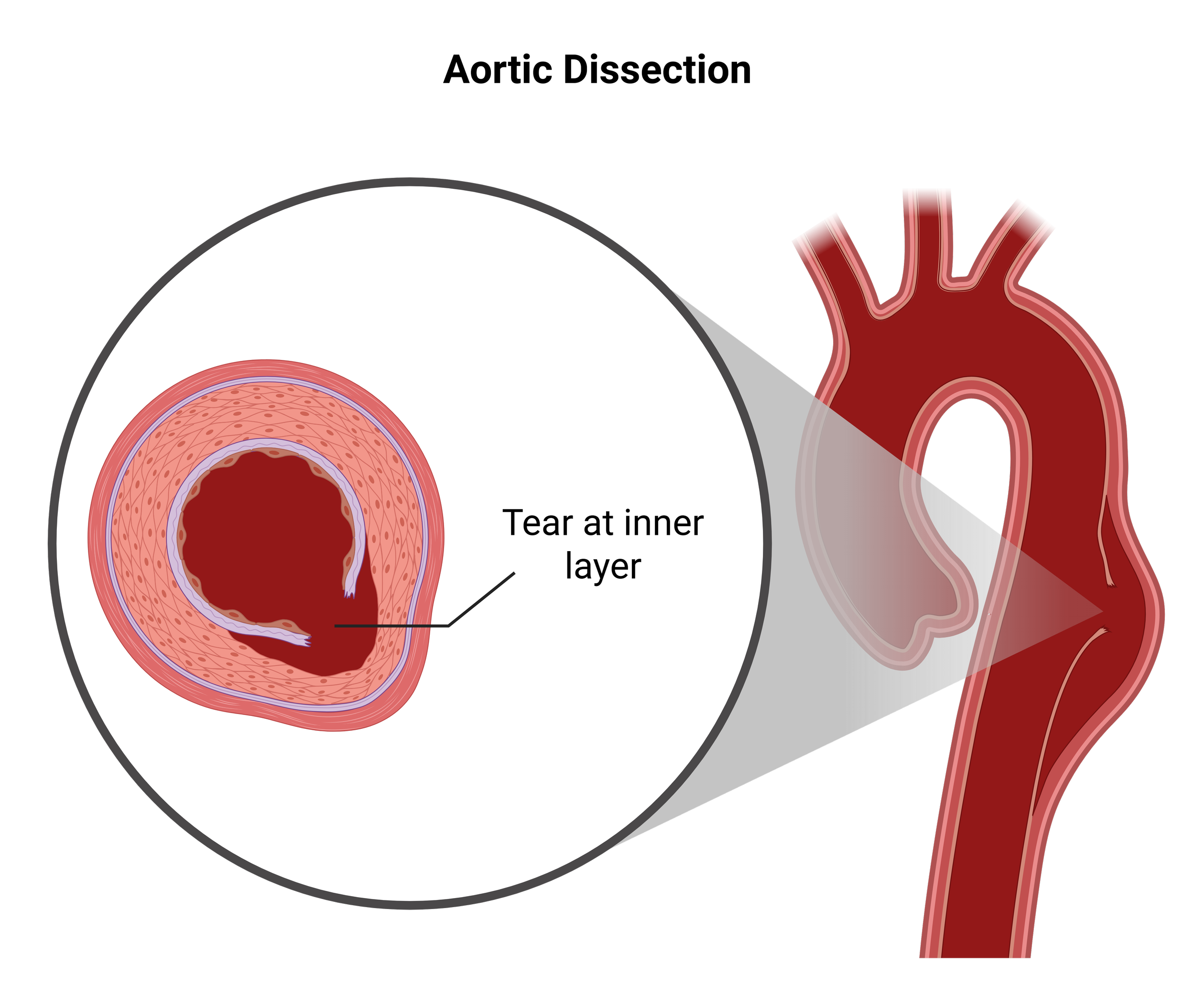Aneurysm
What Are Aortic Aneurysms?
An aortic aneurysm is a bulge or ballooning in the wall of the aorta, the largest blood vessel in your body. This happens when part of the aorta becomes weak and starts to widen. Just like a weak spot on a tire, an aneurysm can grow over time and may eventually lead to serious problems if not found or treated.
Different Types of Aneurysms
Aortic aneurysms can happen in different locations, and each type has its own features:
Aneurysms near the heart (ascending aorta or aortic root): These are closer to where the aorta begins.
Thoracic aortic aneurysm (TAA): Develops in the section of the aorta passing through your chest.
Thoracoabdominal aneurysm: Spans both the chest and abdominal parts of the aorta.
Abdominal aortic aneurysm (AAA): Occurs in the part of the aorta that runs through your belly.
Symptoms
Most aortic aneurysms grow slowly and usually don’t cause any symptoms at first. Many people don’t know they have one until it’s found during a scan for another reason.
If symptoms do appear, they may include:
A pulsing feeling in your belly (for AAA)
Deep, constant pain in your back, chest, or abdomen
Feeling full or unable to eat a large meal
If an aneurysm starts to leak or burst, it becomes a life-threatening emergency. Signs may include sudden, severe pain, fainting, or shock. This is why early detection and monitoring are so important
Complications
The main danger of an aortic aneurysm is that it may:
Rupture: The wall of the aorta breaks open, causing severe internal bleeding.
Dissect: A tear develops inside the wall of the aorta, splitting its layers apart (aortic dissection).
Blood clots: Sometimes, blood clots can form inside the aneurysm and travel to other parts of the body.
Each of these complications can be life-threatening and require immediate medical attention.
Treatment
Treatment for aortic aneurysms depends on their size, location, and how fast they are growing. Options include:
Regular monitoring: Small aneurysms are often checked with ultrasound or CT scans to watch for changes.
Medications: Medicines like blood pressure drugs help take strain off the aorta.
Surgery: Large or fast-growing aneurysms may need repair. This can be done with open surgery or minimally invasive methods such as endovascular stent grafts.
Your doctor will discuss which approach is safest for you, based on your overall health and the features of your aneurysm.
Pseudoaneurysms (False Aneurysms):
Besides “true” aneurysms, patients might sometimes hear the term pseudoaneurysm or "false aneurysm." Unlike a true aneurysm, which involves all three layers of the aorta’s wall, the wall of a pseudoaneurysm is partly torn, and blood leaks out but is trapped by the outer tissue or surrounding structures.
How does this happen? Pseudoaneurysms usually form after trauma, surgery, catheter procedures, or infections that cause a hole or tear in the aortic wall.
Why is it important? The wall of a pseudoaneurysm is much weaker than a true aneurysm. It is usually at higher risk of sudden rupture and often needs close monitoring or urgent treatment.
How is it detected? Doctors can see pseudoaneurysms on scans like ultrasound, CT, or MRI. Treatment may involve specialized repair, either surgically or with a stent graft.



